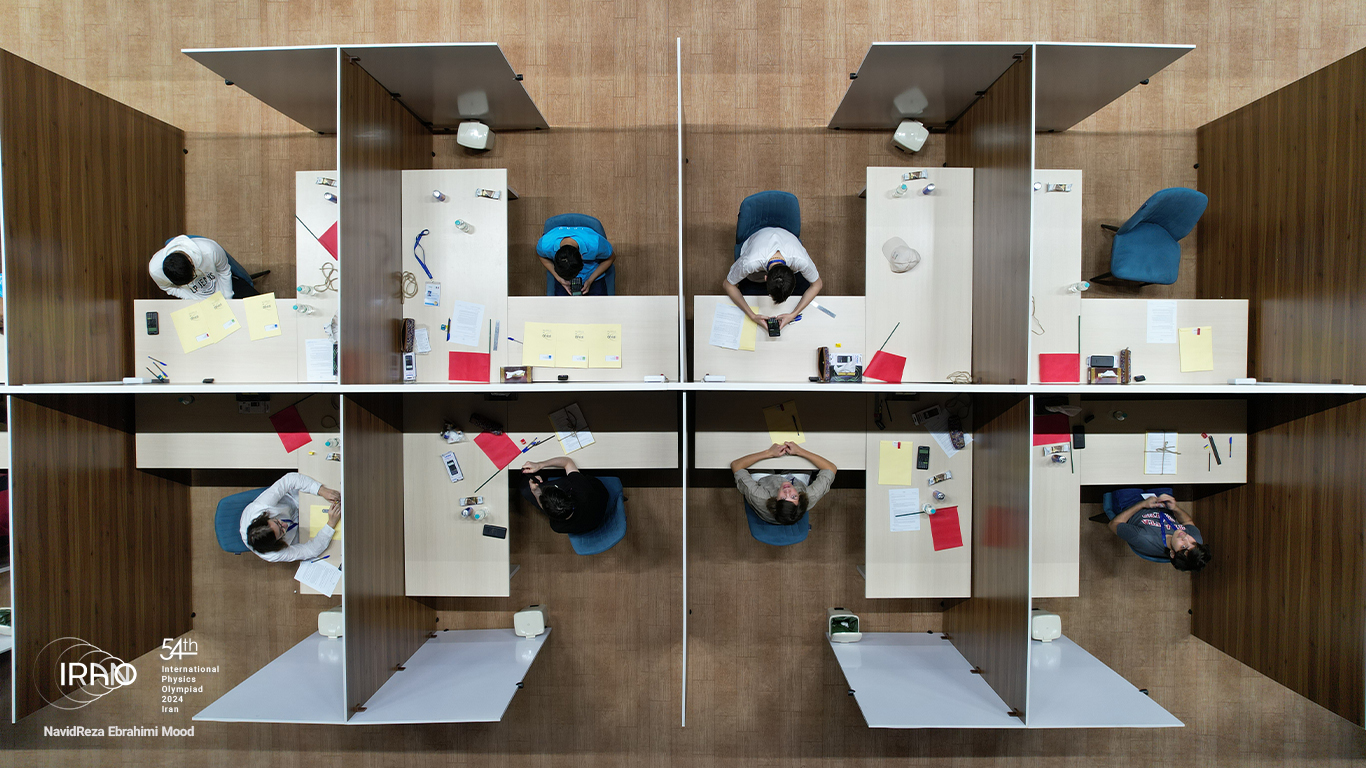Home > News
Theoretical Exam of IPhO 2024 Held on the Fifth Day of the International Physics Olympiad

According to the Secretariat of the 54th International Physics Olympiad, Hamed Bakhshian, Chair of the Examination Committee, stated that the theoretical exam of the 54th International Physics Olympiad was held this morning in the Sports Hall of Isfahan University of Technology. The exam featured three questions, which were designed and reviewed by the Scientific Committee starting September 10.
He continued, "The question designers were required to adhere to the Olympiad syllabus, and efforts were made to ensure the questions covered various fields of physics. Accordingly, the first question addressed thermodynamics, the second involved mechanics and electromagnetism, and the third covered gravitation, mechanics, and thermodynamics."
The Chair of the Examination Committee emphasized that the questions differed from standard ones and needed to relate to current global issues or research conducted in the host country.
He further noted that the quality of the questions was confirmed by the team leaders of participating countries. The problems and their assumptions were meticulously reviewed several times by members of the Scientific Committee and, after completing the review stages, were solved by prominent Iranian physicists. Consequently, after approval by the International Approval Committee, the questions received unanimous approval from international team members.
Bakhshian added that the team leaders believed the questions presented a challenging yet engaging problem for the participants.
Farhad Shahbazi, the designer of the first question, discussed the primary focus of this question: "The main theme of this question is global warming, as it is a pressing issue worldwide."
He elaborated, "Solar radiation absorbed by the Earth and re-emitted contributes to the greenhouse effect, which is essential for Earth's temperature and life formation. However, excessive greenhouse gas emissions, primarily from human industrial activities, are currently exacerbating this effect."
Shahbazi explained that the question required students to calculate the temperature change of the Earth due to increased atmospheric absorption.
Samad Moqimi, the designer of the second question, elaborated on the focus: "In recent decades, significant interest has been in trapping and cooling particles like atoms and observing their motion reduction through lowered temperatures."
He continued, "Our aim was to create a question based on Nobel Prize-winning phenomena from 1989 and 1997, allowing students to explore these concepts. The question involves the concept of atomic equilibrium in an electromagnetic field, simplified step-by-step to aid students in solving it and distinguishing between rapid and slow changes."
Moqimi also discussed the second part of the question: "It involves trapping an atom and cooling it using lasers. Students must perform calculations to determine the maximum temperature reduction achievable."
Soroush Shakeri, the designer of the third question, mentioned that it was based on recent research related to the National Observatory. "The third question is based on recent studies associated with Iran's National Observatory, and one of the images used was captured by the national telescope."
He added, "The main focus of the question is on the evolution of binary star systems and the related physical parameters, involving celestial mechanics, mechanics, thermodynamics, and mathematical skills essential for solving physics problems."
